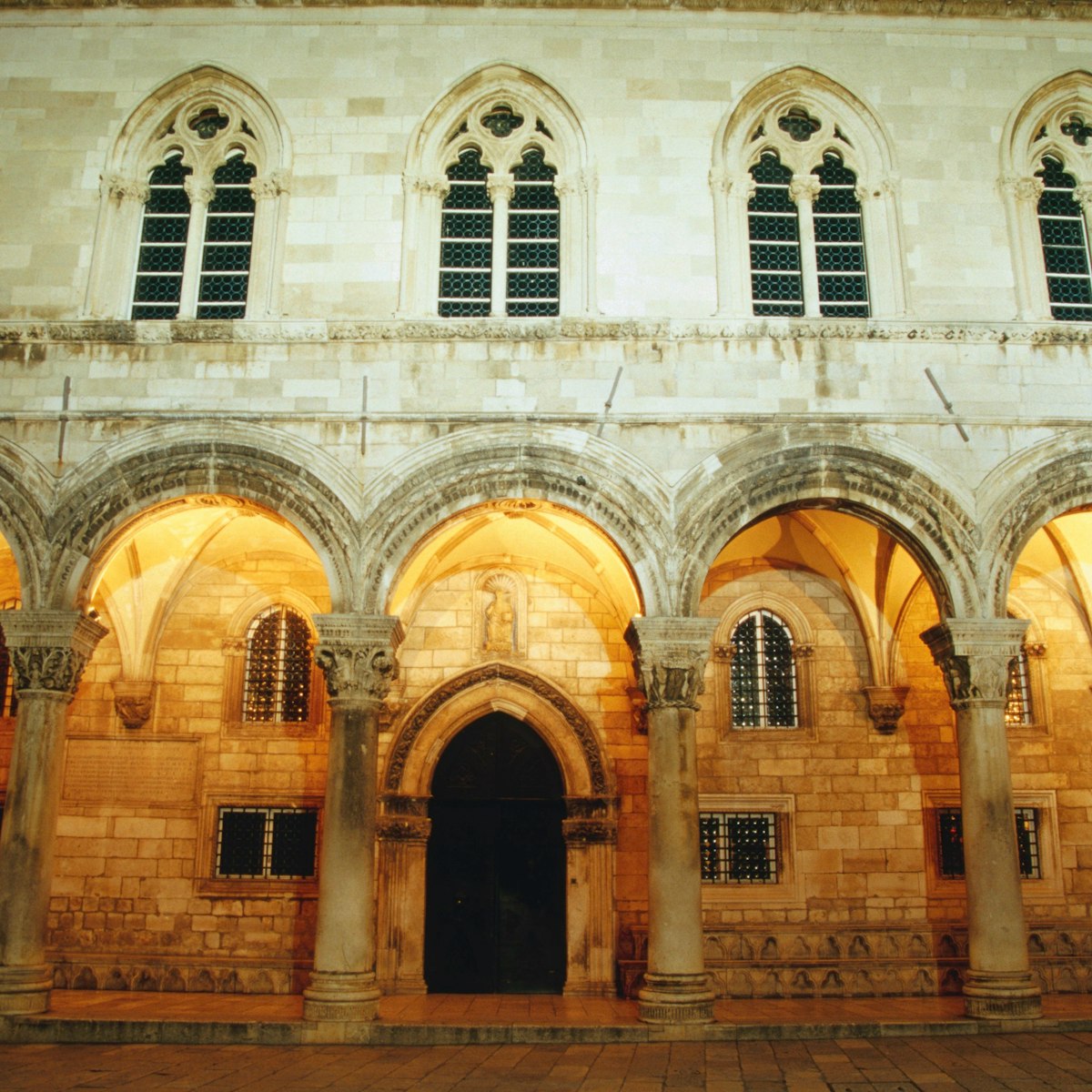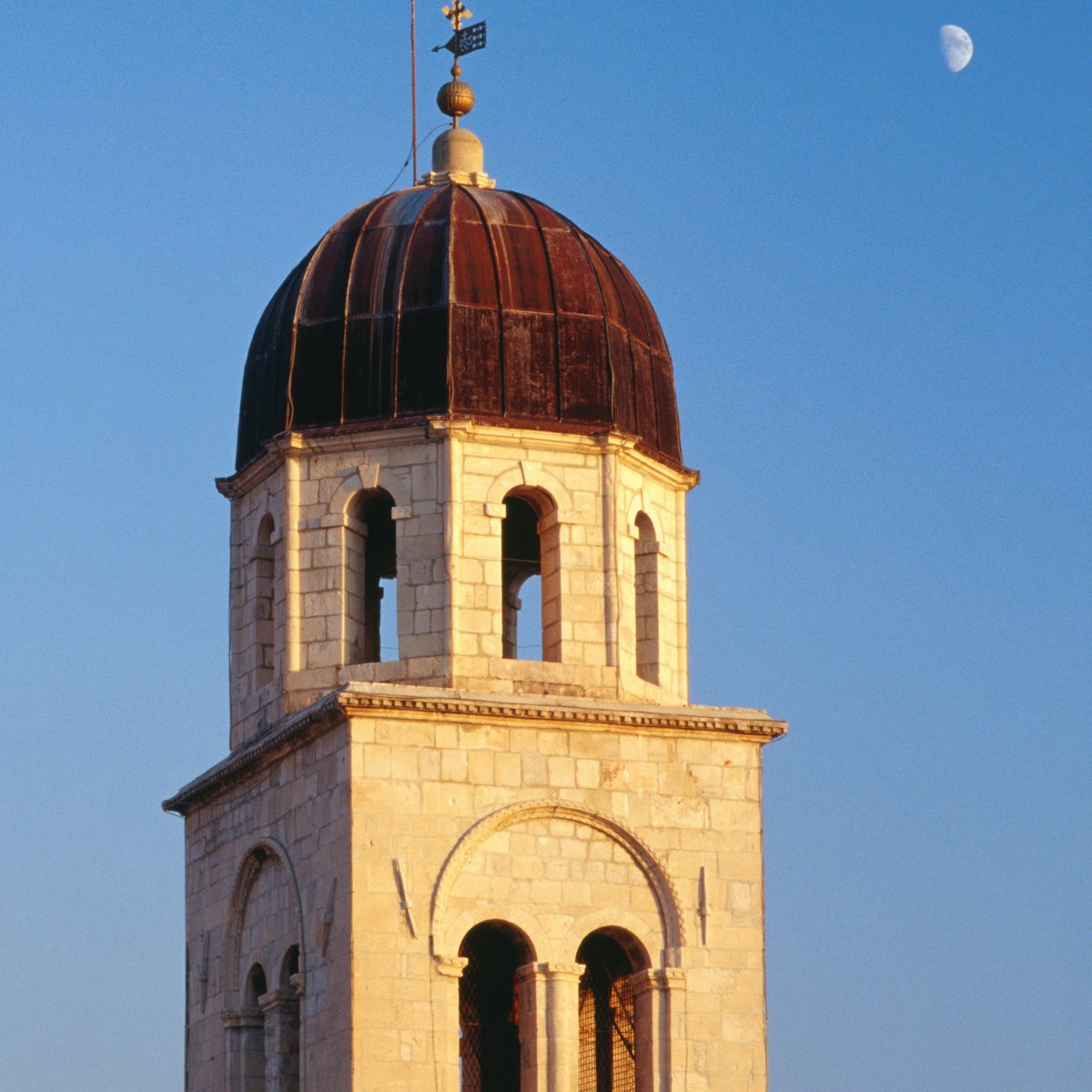One of Dubrovnik’s most famous landmarks, this circular fountain was built in 1438 as part of a water-supply system that involved bringing water from a spring 12km away. Originally the fountain was adorned with sculptures, but it was heavily damaged in the 1667 earthquake and only 16 carved masks remain, with their mouths dribbling drinkable water into a drainage pool. Its sibling, the ornate Little Onofrio Fountain, is in Luža Sq at the other end of Stradun.

©Vesna Celebic/Lonely Planet
Lonely Planet's must-see attractions

0.19 MILES
No visit to Dubrovnik is complete without a walk around the spectacular city walls that encircle its historic core. They're among the finest in the world…

0.19 MILES
Built in the late 15th century for the elected rector who governed Dubrovnik, this Gothic-Renaissance palace contains the rector’s office and private…

0.07 MILES
An immensely powerful experience, this gallery features compelling exhibitions curated by New Zealand photojournalist Wade Goddard, who worked in the…

0.58 MILES
From the top of this 412m-high hill, Dubrovnik's old town looks even more surreal than usual – like a scale model of itself or an illustration on a page…

25.74 MILES
Named after five young women named Danica who died during WWII, this pedestrian promenade stretches along the waterfront for more than 5km from Igalo to…

8.55 MILES
Car-free Lopud has the prettiest settlement of all the Elafitis, composed of stone houses surrounded by exotic gardens and overlooked by ruined fortresses…

0.03 MILES
Within this monastery's solid stone walls are a gorgeous mid-14th-century cloister, a historic pharmacy and a small museum with a collection of relics and…

1.35 MILES
Lush Lokrum is a beautiful, forested island full of holm oaks, black ash, pines and olive trees, only a 10-minute ferry ride from Dubrovnik's Old Harbour…
Nearby Dubrovnik attractions
0.01 MILES
Built between 1520 and 1528, this church was one of the few buildings to survive the earthquake of 1667. It’s open for occasional exhibitions and regular…
0.02 MILES
The natural starting point to any visit to Dubrovnik is this imposing city gate, built in 1537. While crossing the drawbridge, imagine that this was once…
3. Franciscan Monastery & Museum
0.03 MILES
Within this monastery's solid stone walls are a gorgeous mid-14th-century cloister, a historic pharmacy and a small museum with a collection of relics and…
0.07 MILES
Educational but not terribly interesting (unless you're a fan of 16th-century Croatian theatre), this small museum is devoted to Marin Držić (c 1508–67),…
0.07 MILES
The westernmost tower of the city walls was built to protect the approach to Pile Gate.
0.07 MILES
Interrupting the continuum of souvenir shops on Od Puča, this small church is most easily spotted by the cypress tree growing out of the façade, sharing…
0.07 MILES
An immensely powerful experience, this gallery features compelling exhibitions curated by New Zealand photojournalist Wade Goddard, who worked in the…
0.09 MILES
Inhabiting the 16th-century Rupe Granary, this museum contains mildly interesting exhibits relating to agriculture and local customs.